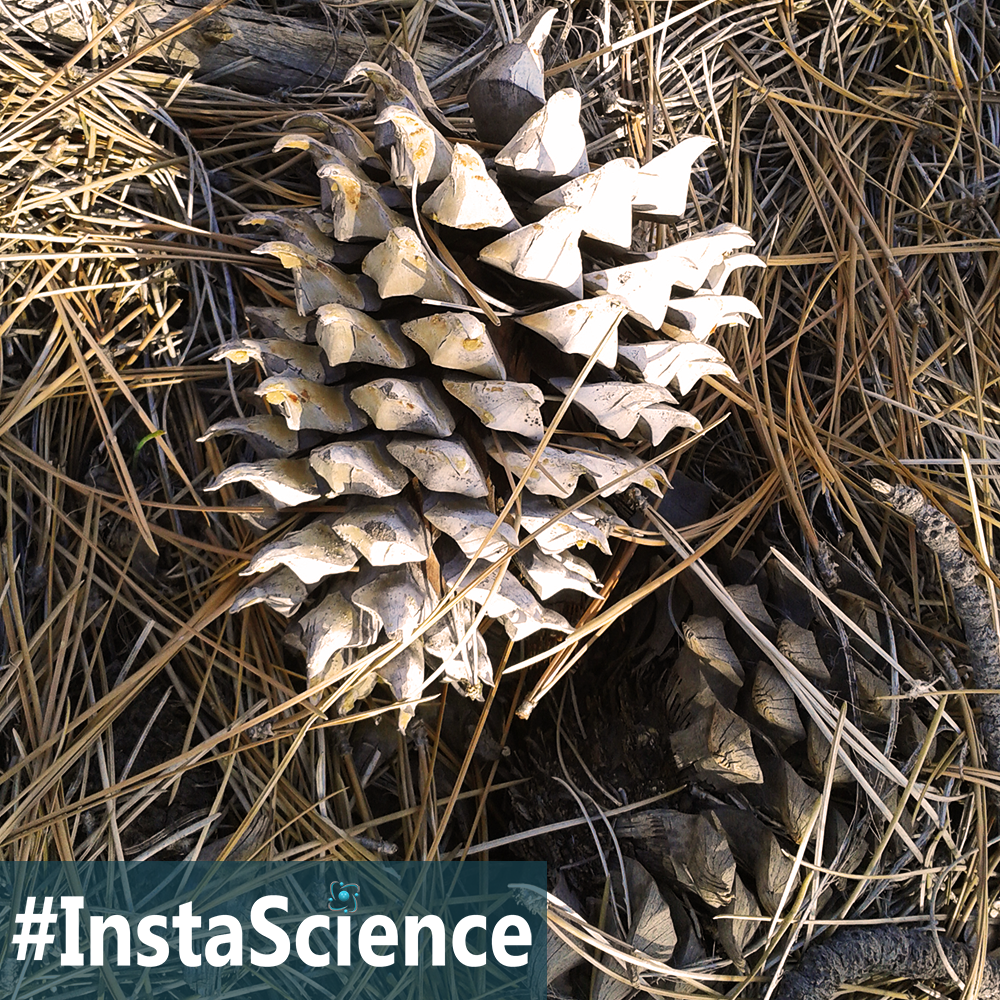
Cones come in all shapes and sizes. These fruits of conifer trees are excellent subjects to study in the cooler months. But, did you know that there are both male and female cones?
The male cone is typically soft, green, and small. In fact, many of us never even notice it, but it is very important. The male cone produces the pollen for the conifer tree and without it the seed would not be able to develop.
Under each of the scales of this cone is a sac that contains a yellow powder known as pollen. When the conditions are right, the male cone will open, the wind will disperse the fine particles, and some of the pollen will reach female cone to fertilize it.
The mature female cone is typically larger, harder, and brown in color. It is what we normally call a pine cone, but did you know that even these cones typically start out soft and green? Once the seed is fertilized, the female cone darkens and hardens as the seed matures. This process can take a year or more to occur.
As the seed matures inside the female cone, a type of glue called resin helps the scales remain tightly closed. When the temperature and humidity are right, the cone will open and the seeds will be dispersed by the wind.
Fun Fact – The Coulter Pine (pictured above) has the heaviest cone in the world, some of which can weigh up to 10 pounds!
Teaching Science At Home
Want to learn more about cones? Check out the following articles:
- Inside the Cone – Learn more about cones and see how to look inside them in this post.
- Conifers 4 Kids – Learn more about conifer trees from Real Trees 4 Kids.
- Identify Conifers – Learn how to identify the most common conifers from Foresty.com.
Related Homeschool Science Activities
Keep the learning going with these science activities!
- Pine Cone Race – Have each student collect a pine cone and two sticks. Then, have each of them use the two sticks to carry the pine cone as they compete in a race!
- Pine Cone Bird Feeder – Have the students make a bird feeder from a pine cone. You will need string, peanut butter, and bird seed. Begin by tying string to the top of the pine cone so that it will hang on a branch. Then, slather the outside of the pine cone with peanut butter. After that, roll the cone in birdseed and hang it outside for the birds to enjoy.
- Pine Cone Hunt – Take the students on a nature walk to look for different kinds of cones. When you find one, take a picture of the tree from which it came. After you get home, use the cones and pictures to identify the conifer trees you found.
 Sign up below to receive weekly tips & tools for homeschool science and we'll send you a FREE copy of
Sign up below to receive weekly tips & tools for homeschool science and we'll send you a FREE copy of